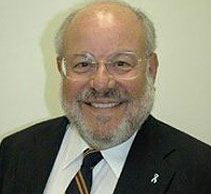SUFFOLK CLOSEUP: Suffolk County Needs A Water Reuse Policy
 Monday, May 6, 2024 at 9:24PM
Monday, May 6, 2024 at 9:24PM SUFFOLK CLOSEUP
By Karl Grossman
 photo Aquifer.org“If we look to western Long Island, there are a lot of lessons that should be applied to us—how a lot of mistakes were made regarding water,” environmentalist John Turner was saying.
photo Aquifer.org“If we look to western Long Island, there are a lot of lessons that should be applied to us—how a lot of mistakes were made regarding water,” environmentalist John Turner was saying.
Turner was speaking about far-western Long Island—Brooklyn—and how it blew its underground water supply more than a century ago.
Brooklyn then tried to tap into the aquifers under the Pine Barrens of Suffolk County for potable water but was rebuffed. So, it needed to look for water from reservoirs built upstate.
These days, the 2.6 million residents of Suffolk and Nassau Counties won’t be able to tap into those reservoirs if they blow their underground water supply because they’re functioning at their maximum, notes Turner. “Suffolk and Nassau will not be able to turn to New York City simply because there’s just not excess or surplus water that the city could provide to those two counties because of the water supply needs of New York City. Plus the cost of trying to interconnect, even if there were excess capacity, would be cost-prohibitive,” he said last week.
Thus, he emphasizes, it’s critical we preserve the water supply we have—the aquifers below our feet—our “sole source” of potable water.
Turner is senior conservation policy advocate at Seatuck Environmental Association in Islip and former legislative director of the New York Legislative Commission on Water Resources Needs of New York State and Long Island. He is also former director of Brookhaven Town’s Division of Environmental Protection.
He has been a leader in the effort to have wastewater purified and returned to the underground water table on Long Island rather than it being discharged into surrounding bays, the Atlantic Ocean and Long Island Sound—as most sewer systems on Long Island do.
Nassau County is 85 percent sewered and as a result of its releasing wastewater in this way, “the uppermost expression of the aquifer system” in Nassau has “dropped considerably,” notes Turner. Hempstead Lake now “is Hempstead Pond.”
What Turner has been warning about is not new.
Dr. Jeffrey A. Kroessler, a historian and professor and chief librarian at John Jay College in Manhattan, wrote and lectured about the Brooklyn and Long Island water story years ago. He lived in Sunnyside, Queens and died in 2023. In 2011, in the “Long Island History Journal,” published by Stony Brook University, there was an extensive article by Kroessler titled “Brooklyn’s Thirst, Long Island’s Water: Consolidation, Local Control, And The Aquifer.”
“In the 1850s…Brooklyn tapped ponds and streams on the south side of Queens County, and in the 1880s dug wells for additional supply,” he related. “This lowered the water table and caused problems for farmers and oystermen, many of whom sued…for damages. Ultimately, salt water seeped into some wells from over-pumping. By 1896, Brooklyn’s system had reached its limit.”
“Brooklyn had to find additional sources for its increasing population,” said Kroessler. “Wary of those intentions, as early as 1884 the supervisors of Suffolk County resolved to oppose ‘the enactment of any measure which, under the plea of supplying water to…Brookyn, may presently or prospectively take from any part of Suffolk County water needed for the use of its own population.’” That legislation was enacted by the Suffolk County Board of Supervisors.
Brooklyn “was casting a covetous eye on the Pine Barrens in Suffolk County.”
“As one writer explained in 1899,” related Kroessler, “In considering the subject of the water supply of Long Island, we must first of all leave out the idea that we receive water from any other source than which falls directly from the sky.” Kroessler said: “The aquifer, therefore, can only be replenished by rainfall filtered through many layers of sand and soil. That slow process accounts for Long Island’s particularly fine water, but also points to the vulnerability of that limited resource.”
The action by the Suffolk County Board of Supervisors was buttressed by New York State. As Kroessler wrote, “Governor Levi P. Morton…signed a law sponsored by Assemblyman Carll S. Burr of Commack that prevented Brooklyn from drawing off Suffolk’s water without the approval of a majority of the county supervisors.”
Meanwhile, New York City “built a new system of reservoirs and aqueducts to deliver water from the Catskills” and “Brooklyn’s old water system was transferred to the City of New York.”
“Only in 1993 did the state legislature pass the Pine Barrens Protection Act to conserve the valuable and irreplaceable resource” as “Suffolk approached the limit of its precious water supply, just as Brooklyn had a century before. But while Brooklyn could look to additional water from New York’s system,” concluded Kroessler in his “Long Island History Journal” article, “Suffolk has no option other than reforming its own practices and policies.”
That is truer than ever today.
Turner is excited about the Suffolk County Water Quality Restoration Act proposed to be on the November election ballot providing for county funding for “projects for the reuse of treated effluent”—notably for utilization on golf courses, sod farms and similar sites—to help preserve the quantity in the underground water table in Suffolk. Turner says it “behooves all levels of government to focus on water reuse.”
 Karl Grossman is a veteran investigative reporter and columnist, the winner of numerous awards for his work and a member of the L.I. Journalism Hall of Fame. He is a professor of journalism at SUNY/College at Old Westbury and the author of six books.
Karl Grossman is a veteran investigative reporter and columnist, the winner of numerous awards for his work and a member of the L.I. Journalism Hall of Fame. He is a professor of journalism at SUNY/College at Old Westbury and the author of six books.













